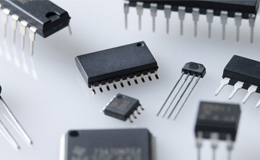PoHS, the full name in English is Prohibition on Certain Hazardous Substances in Consumer Products, and the Chinese translation is "Prohibition on Certain Hazardous Substances in Consumer Products". On June 8, 2007, Norway notified the WTO and put forward the requirement of "prohibiting certain hazardous chemical substances in consumer products", stating that it would restrict 18 substances in consumer products, namely the PoHS regulations.
The 18 restricted substances are: hexabromocyclododecane, tetrabromobisphenol A, medium chain chlorinated paraffins, lead and lead compounds, cadmium and compounds, arsenic and compounds, tributyltin compounds, triphenyltin compounds, Musk xylene, musk ketone, perfluorooctanoic acid and salts and esters, surfactants DTDMAC, DODMAC/DSDMAC, DHTDMAC, bisphenol A, diisooctyl phthalate, pentachlorophenol and triclosan. The substances to be restricted have the characteristics of persistence, bioaccumulation and/or toxicity. The PoHS regulation was passed on December 15, 2007, and was originally scheduled to take effect on January 1, 2008, but was postponed due to the lack of consensus on many issues. Wei "Prohibition of Certain Hazardous Substances in Consumer Products" (PoHS) ban will be implemented soon.
Norway's ban on the use of certain hazardous substances in consumer products (PoHS: Prohibition on Certain Hazardous Substances in Consumer Products) is proposed to be passed on December 15, 2007 and take effect on January 1, 2008.
Scope of application:
PoHS covers all consumer products except food, food packaging, fertilizers, medical equipment, tobacco, transportation and ancillary equipment. It includes product categories in addition to electrical and electronic consumer goods, but also clothing, luggage, construction, toys, etc.
Process of handling POHS report:
The first step: apply
1. Fill in the application form
2. Apply for company information form
3. Provide product information and send samples
Step 2: Quotation
According to the information provided by the engineer, determine the test standard, test time and corresponding cost;
Step 3: Payment
After the applicant confirms the quotation, sign the application form and service agreement and make payment
Step 4: Test
The laboratory conducts a full set of tests on the applied products according to the relevant EU testing standards
Step 5: The test is passed and the report is complete
Step 6: The project is completed and the POHS test report is issued

 Hello, welcome to visit the official website of Nengbiao Testing!
Hello, welcome to visit the official website of Nengbiao Testing! Website map
Website map Contact
Contact ENGLISH
ENGLISH









